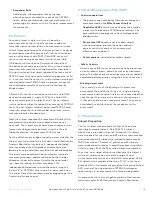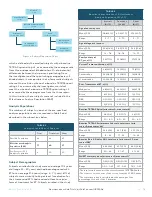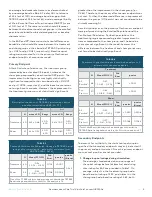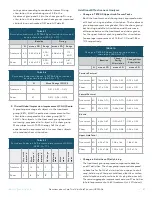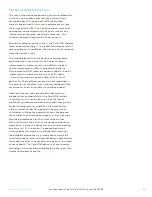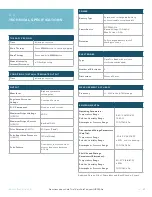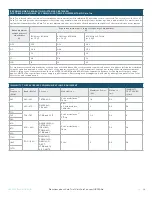
16
Questions about Cala Trio? Visit CalaTrio.com/HCPFAQs
LBL-5122 Rev C NOV 2019
9.1 Study Overview
The study was multi-center, prospective, randomized,
double-blinded, and sham-stimulation controlled. Each
subject was seen for a single three-hour appointment at
a study site. Subjects were randomized one-to-one to
either the investigational TAPS stimulation
(“treatment”
group)
or sham stimulation
(“sham” group)
. The TAPS
stimulation amplitude for the treatment group was based
on each subject’s stimulation threshold. The sham group
received 0-amplitude stimulation. The study site personnel
and investigator were not blinded and knew the subject’s
therapy allocation. However, the subject and the raters
assessing the primary effectiveness endpoint were blinded.
The subjects’ tremor severity was assessed before, during,
and immediately after the 40-minute stimulation session
using various metrics. Safety was assessed using adverse
event data collected during the study.
9.2 Key Inclusion Criteria
1.
At least 22 years of age
2.
A diagnosis of essential tremor as confirmed from
clinical history and examination by a movement
disorder neurologist
3.
At least one hand exhibiting kinetic tremor ≥ 2 as
assessed by the Essential Tremor Rating Assessment
Scale (TETRAS) Archimedes spiral task completed
during the baseline evaluation, as assessed by the
Investigator in-person.
4.
Score of 3 or above in any one of the items of the
Bain & Findley Activities of Daily Living Scale
9.3 Key Exclusion Criteria
1.
Implanted electrical medical device, such as a
pacemaker, defibrillator, or deep brain stimulator
2.
Previous thalamotomy procedure, including
Stereotactic Thalamotomy, Gamma Knife
Radiosurgical Thalamotomy, and focused
ultrasound, for the treatment of tremor
3.
Suspected or diagnosed epilepsy or other
seizure disorder
4.
Pregnant
5.
Swollen, infected, inflamed areas, or skin eruptions,
open wounds, or cancerous lesions of skin at
stimulation site
6.
Peripheral neuropathy affecting the tested
upper extremity
7.
Alcoholism
(score of 4 or higher on DSM-5)
8.
Other possible causes of tremor, including
Parkinson’s disease, drug-induced, enhanced
physiological tremor, dystonia
9.
Other neurodegenerative disease like Parkinson-plus
syndromes suspected on neurological examination.
These include: multisystem atrophy, progressive
supranuclear palsy, dementia with Lewy bodies,
and cortical basal ganglionic degeneration
10.
Changes in medication for tremor within 1 month prior
to study enrollment
11.
Change in antidepressant medication within 3 months
prior to study enrollment
12.
Botulinum Toxin injection for hand tremor within 6
months prior to study enrollment
13.
Alcohol or caffeine consumption within 12 hours of
study enrollment
Subjects already taking medications for their essential
tremor remained on their medications during the study.
9.4 Study Endpoints
Safety
The primary safety endpoint was an analysis of adverse
events types and rates for all enrolled subjects.
Effectiveness
•
The
primary effectiveness endpoint
was a significantly
greater change in the treatment group compared to
the sham group in the TETRAS Archimedes spiral
rating after stimulation compared to baseline. An
analysis of covariance (ANCOVA) model was used to
assess the statistical significance of the difference in
the mean change between the treatment and sham
groups. The model included the baseline score as a
continuous covariate, and randomization assignment
as a classification variable.
CLINICAL STUDY SUMMARY
9.0

















